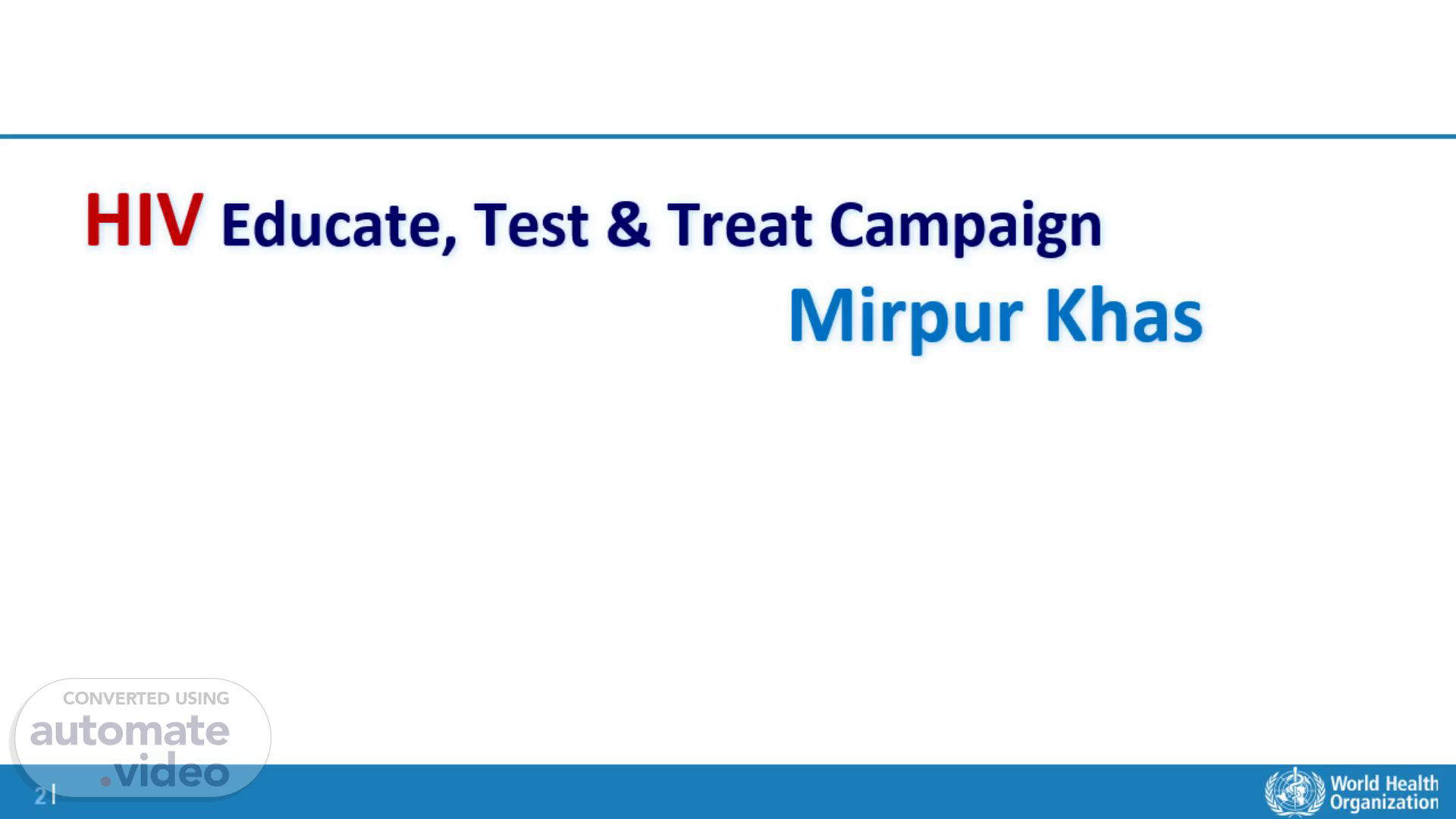Scene 1 (0s)
[Audio] The HIV Educate, Test & Treat Campaign in Mirpur Khas welcomes you today to discuss the rising trend of HIV cases in this region..
Scene 2 (9s)
[Audio] Sindh province has faced multiple HIV outbreaks, with children being the most affected. This has been attributed to unsafe health practices, which have been identified as the primary cause of these outbreaks. The 2019 outbreak in Larkana highlighted severe deficiencies in the healthcare system. Similarly, a recent surge of new HIV infections has been reported in Mirpur Khas, raising significant alarm among public health authorities..
Scene 3 (35s)
[Audio] The rising number of HIV-positive cases, particularly among children, has led to an urgent need for mass screening. In the first six months of this year, we have detected 29 HIV-positive cases from 289 samples. Meanwhile, our ART Center has seen a surge in pediatric cases, with only one case reported in December last year, but rising to 30 by May this year. Furthermore, substandard HIV testing kits and limited laboratory capabilities have delayed accurate diagnosis and care, making it essential to address these healthcare gaps. With ongoing transmission necessitating timely identification and treatment, we must take immediate action to educate, test, and treat those affected..
Scene 4 (1m 18s)
[Audio] The population of Mirpur Khas is approximately 1.75 million people, according to the 2023 census. The administrative setup consists of seven talukas, including Mirpur, Kot Ghulam Mohammad, Sindhri, Hussain Bux Mari, Digri, Jhuddo, and Shujaabad. The taluka has been restructured into two municipal corporations with 12 union councils each, but health activities still operate under the old division of eight union councils. The total population of these talukas is 1,750,065..
Scene 5 (1m 52s)
[Audio] HIV testing is not consistently available across public healthcare facilities. Many facilities rely on non-WHO prequalified kits, which compromises test accuracy and treatment outcomes. The district laboratory (PPHI) can only conduct ELISA tests, lacking PCR testing capabilities essential for confirmatory diagnosis. Private laboratories provide comprehensive HIV testing, but their services are costly and inaccessible to many patients. Only the ART Center and Nai Zindagi CoPC site use WHO-prequalified kits, ensuring accurate and reliable results..
Scene 6 (2m 32s)
[Audio] The data suggests that there is a significant local burden of HIV in Mirpur Khas, with the majority of registered cases coming from this district. Furthermore, the majority of HIV infections are concentrated within Taluka Mirpur Khas itself. This highlights the need for targeted interventions and education efforts in this area..
Scene 7 (2m 52s)
[Audio] The data from Taluka Mirpur in the Mirpur Khas Larkana district shows a concerning trend in new infections, with the highest population and the highest number of reported cases. Out of the seven talukas in Mirpur Khas, Mirpur has the highest population with 273,290 people, and it also has the highest number of reported cases in the ART MIS data with 7 cases. The other talukas, including Kot Ghullam Mohammad, Sindhri, and Hussain Bux Murri, also have reported cases of HIV, totaling up to 25 reported cases in the district. This data highlights the need for continued education, testing, and treatment efforts to prevent further spread of HIV in Mirpur Khas and beyond..
Scene 8 (3m 35s)
[Audio] The data analysis showed that Union Councils one, four, six, and eight were identified as hotspots, with confirmed cases indicating that these areas required urgent attention. The population versus cases table demonstrated how reported cases were distributed across various towns and union councils within the Mirpur Khas district. Given the eligible age range of zero to forty-five years, this data offered crucial insights for targeted interventions and resource allocation..
Scene 9 (4m 4s)
[Audio] The operational planning involved collaboration between the Director General of Health Services, the Additional Director of the Centers for Disease Control and Prevention - International and National Program Officer World Health Organization, ensuring the campaign was well-coordinated and received necessary support. The coordination with stakeholders was crucial, involving the Commissioner, Deputy Commissioner, Chairman, and District Health Officer, which helped ensure all relevant authorities were informed and aligned with the campaign's objectives. A team of 80 Outreach Workers, 5 Supervisors, 5 Data Entry Operators, and 1 Project Coordinator was selected and trained to implement the campaign, playing a vital role in conducting door-to-door surveys, collecting data, and providing education and testing services to the community. Confirmatory testing and linkage to treatment services were provided through the ART Center in Mirpur Khas, ensuring individuals who tested positive for HIV received timely and appropriate treatment. The selection of areas was based on data analysis, prioritizing the highest prevalence union councils, allowing us to focus our efforts on the most affected communities. Finally, optimized data collection and testing procedures were implemented using a structured approach for comprehensive data collection, ensuring accurate and reliable data throughout the campaign..
